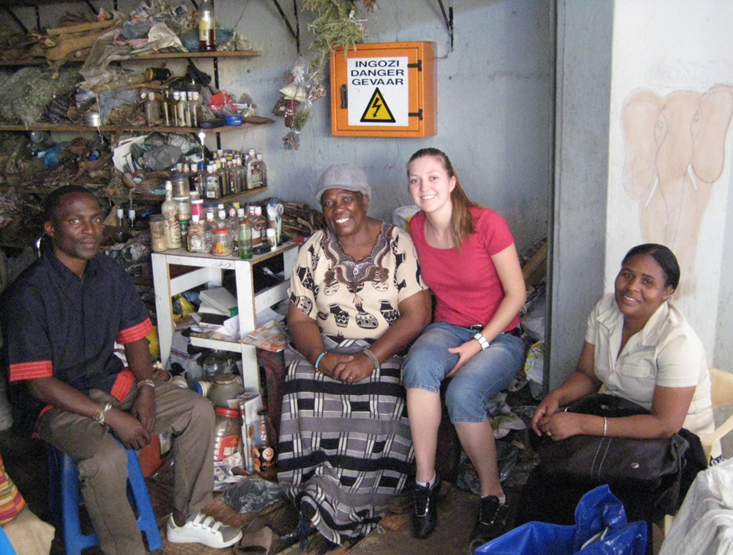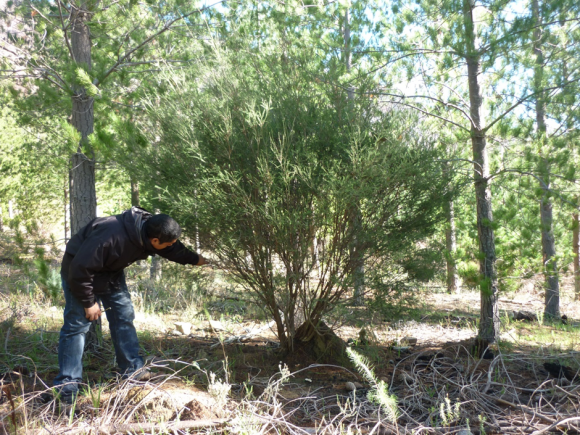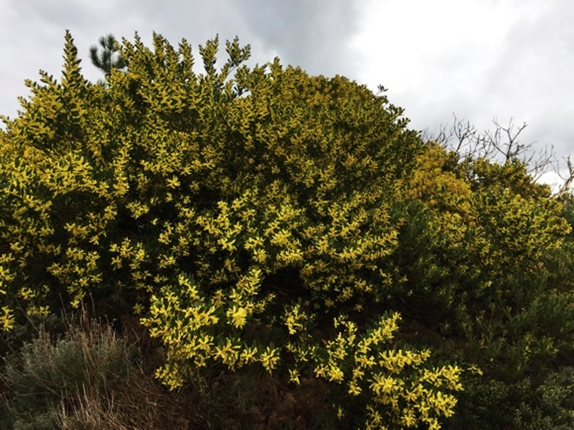22 May 2017 | By Marcus Byrne
Traditional medicine in South Africa is an amalgam of older local practices and a little, recent, “spice” thrown in. The arrival of Indian labourers during the 19th century brought Ayurvedic medical practices from Tamil Nadu into South Africa. Many of these have been adopted to some extent, by our local medicinal practitioners. The results of this fusion can be seen in the modern umuthi trade where several alien plant species are sold in informal markets and umuthi shops in large urban centres.
C·I·B core team member Marcus Byrne, along with University of Witwatersrand’s traditional medicine expert Vivienne Williams and student Ewa Wojtasik explored the viability of alien plants utilised in the South African umuthi trade and results of the study was published in the South African Journal of Botany. Given that plants in the traditional medicine trade are often alien species, the authors examined the viability of plant material sold at major markets in both Johannesburg and Durban.
They discovered a total of 42 alien plants being traded as traditional medicine. Of these, 26 species were plant material with the potential to propagate, including seeds, bulbs, tubers and live stems with roots. Twenty two of these species were found to be viable and capable of establishing new plants. Furthermore, seven of these plants are currently listed on the National Environmental Management Biodiversity Act 2014, which prohibits in trade these species.
In many respects the umuthi trade mirrors the horticultural plant trade, in which a few hardy species are favoured simply because they are dependable; endure transport and storage to grow when correctly triggered. Whether the umuthi plants will escape from these markets remains to be seen. However, the elements of trade, including large numbers of individuals, repeated importations, transportation throughout the country and persistence in the marketplace, all enhance the chances of plants establishing in new habitats.
Thus the question arises, as to what the appropriate response is to a discovery of this nature. Prohibition or regulation is unlikely to be successful in the near future, given the numerous pressures on borders and their control. However, voluntary regulation has proven very successful in halting the sale of alien invasive plants in the South African horticultural industry. Public education, especially through schools is likely to be a useful tool for raising awareness of these plants, particularly because alien invasive weeds are part of the grade 11 national curriculum.
“In the meantime, the scientific research underlying this discovery should continue by gathering more information on the exact importation routes and quantities of plant parts being traded as umuthi”, says Byrne. He adds “informal markets arising from newer immigrant groups, such as the Chinese, who have more recently moved into Africa, should not be overlooked. Ultimately, assessments of alien plant movements within these channels will also indicate the extent of this practice, allowing us to decide how much of a problem this ancient human behaviour really is.”
Read the paper
For more information, contact Marcus Byrne at Marcus.Byrne@wits.ac.za



